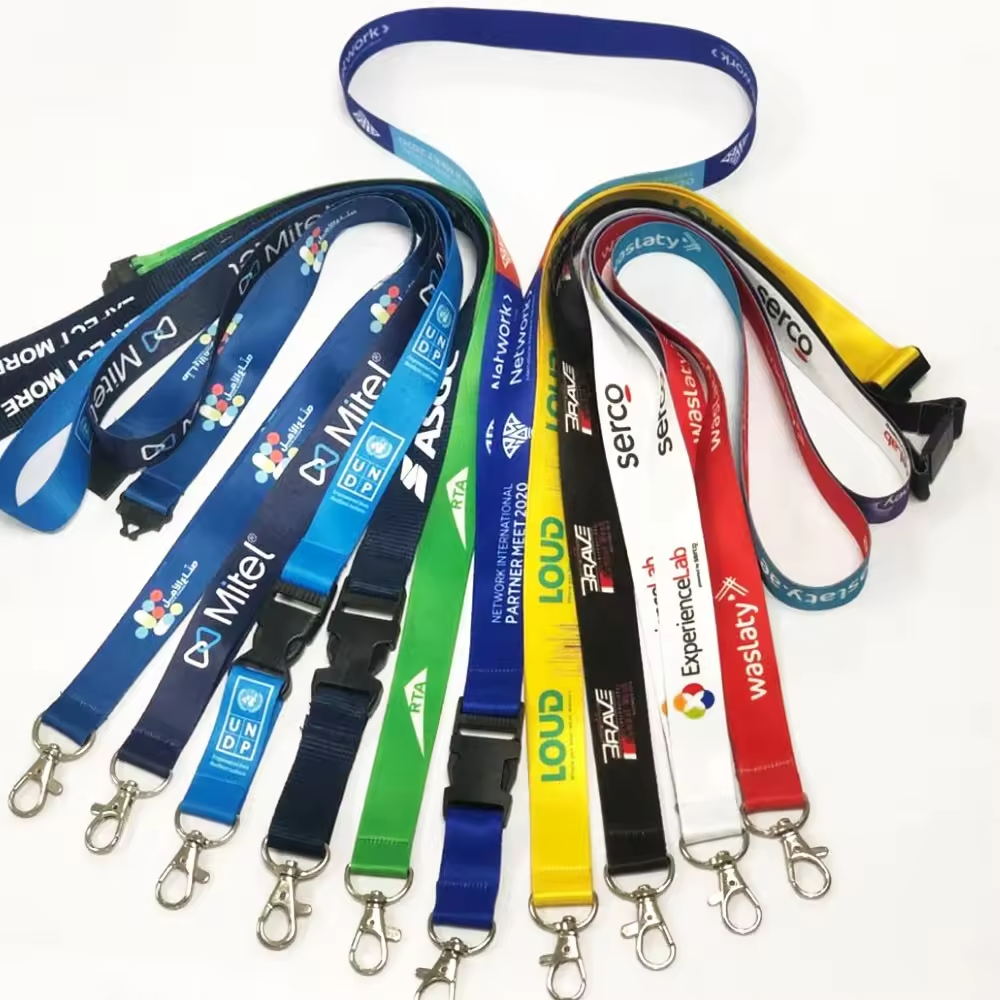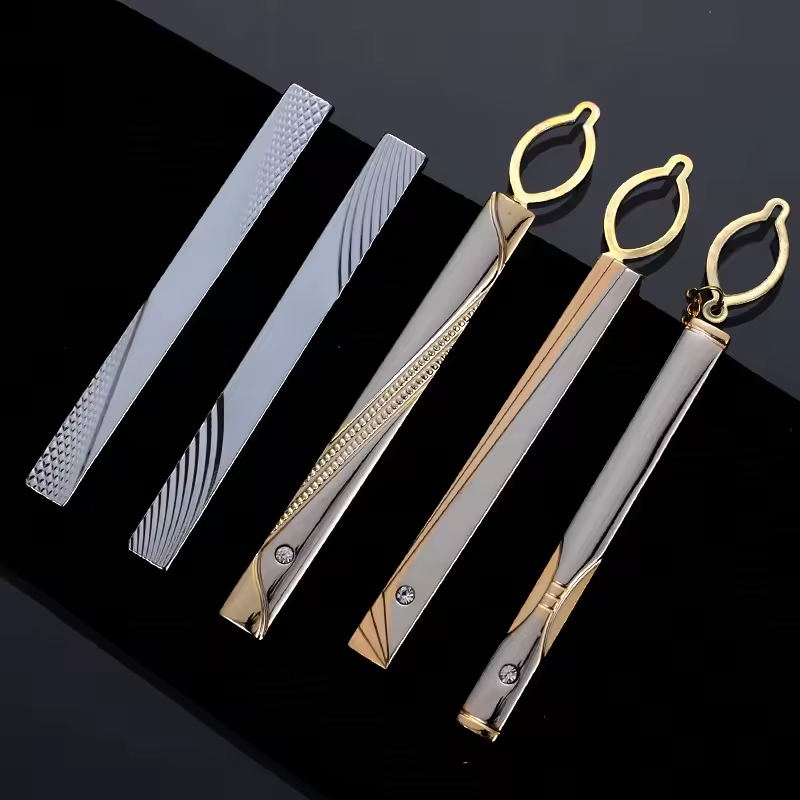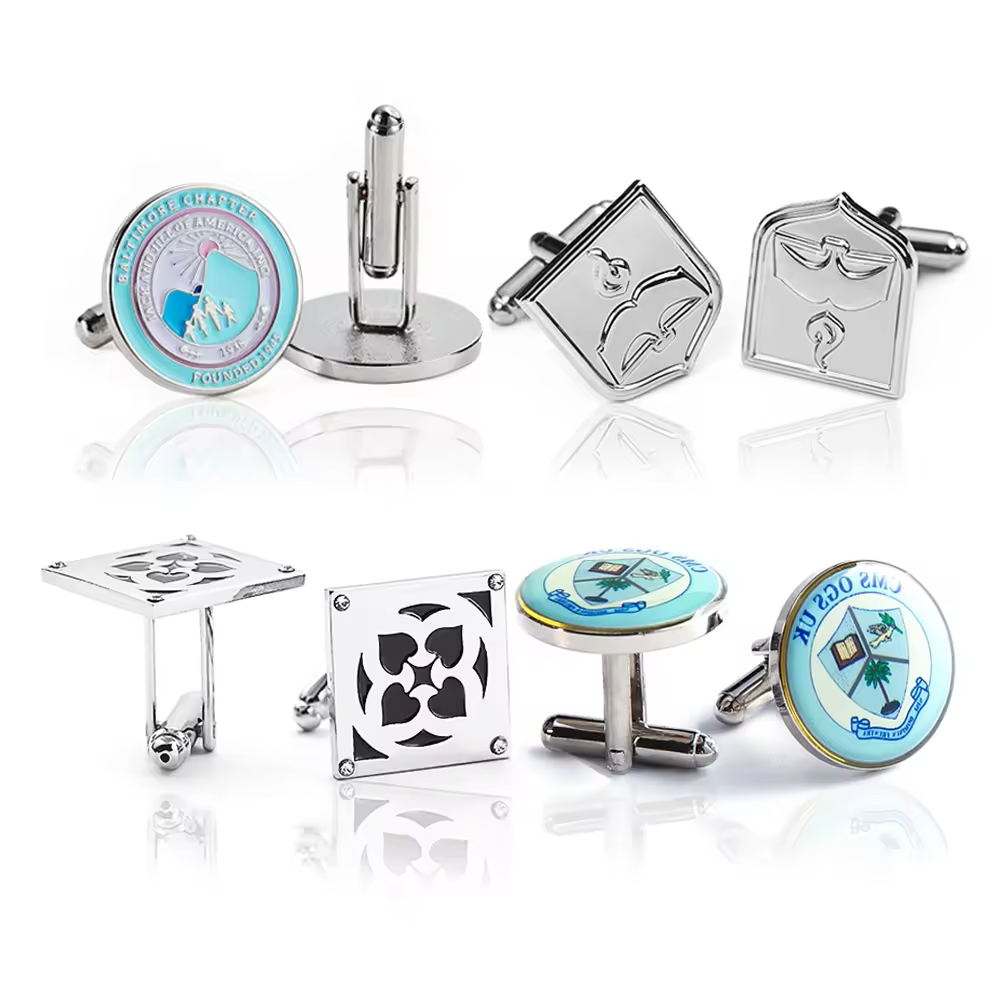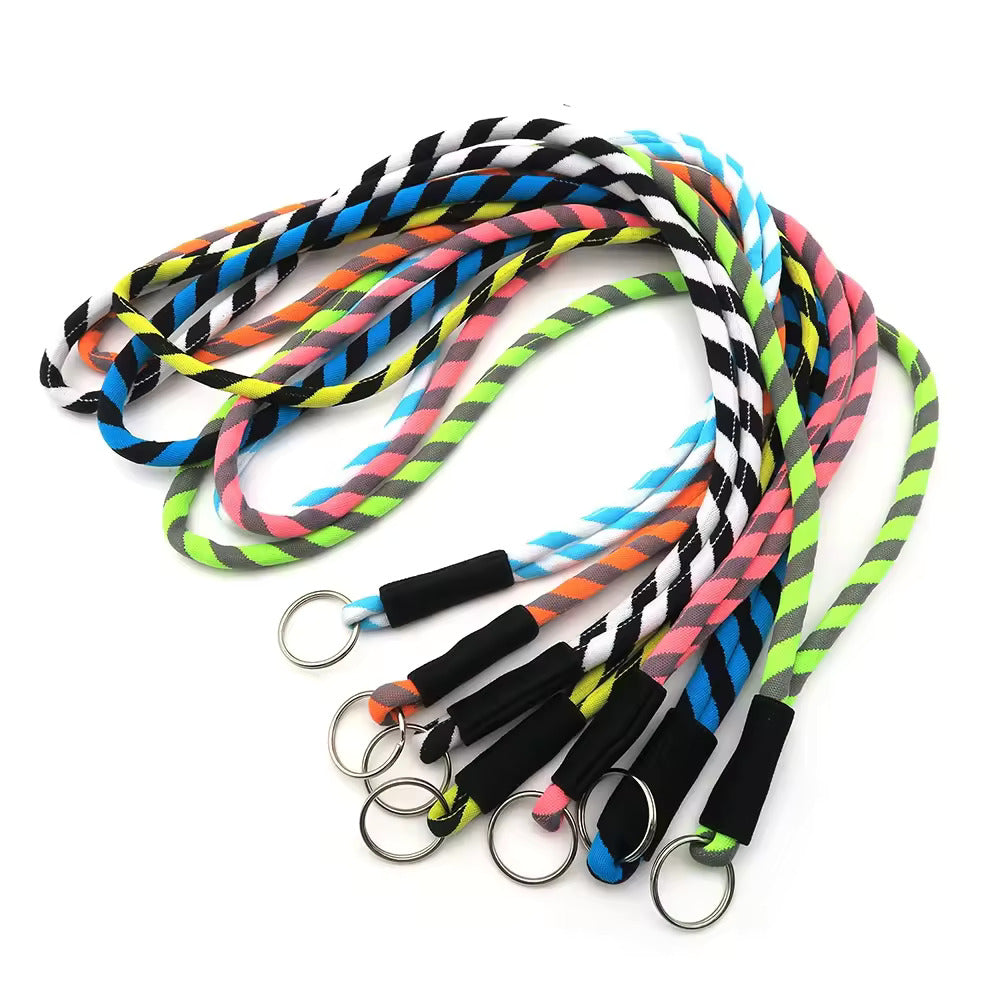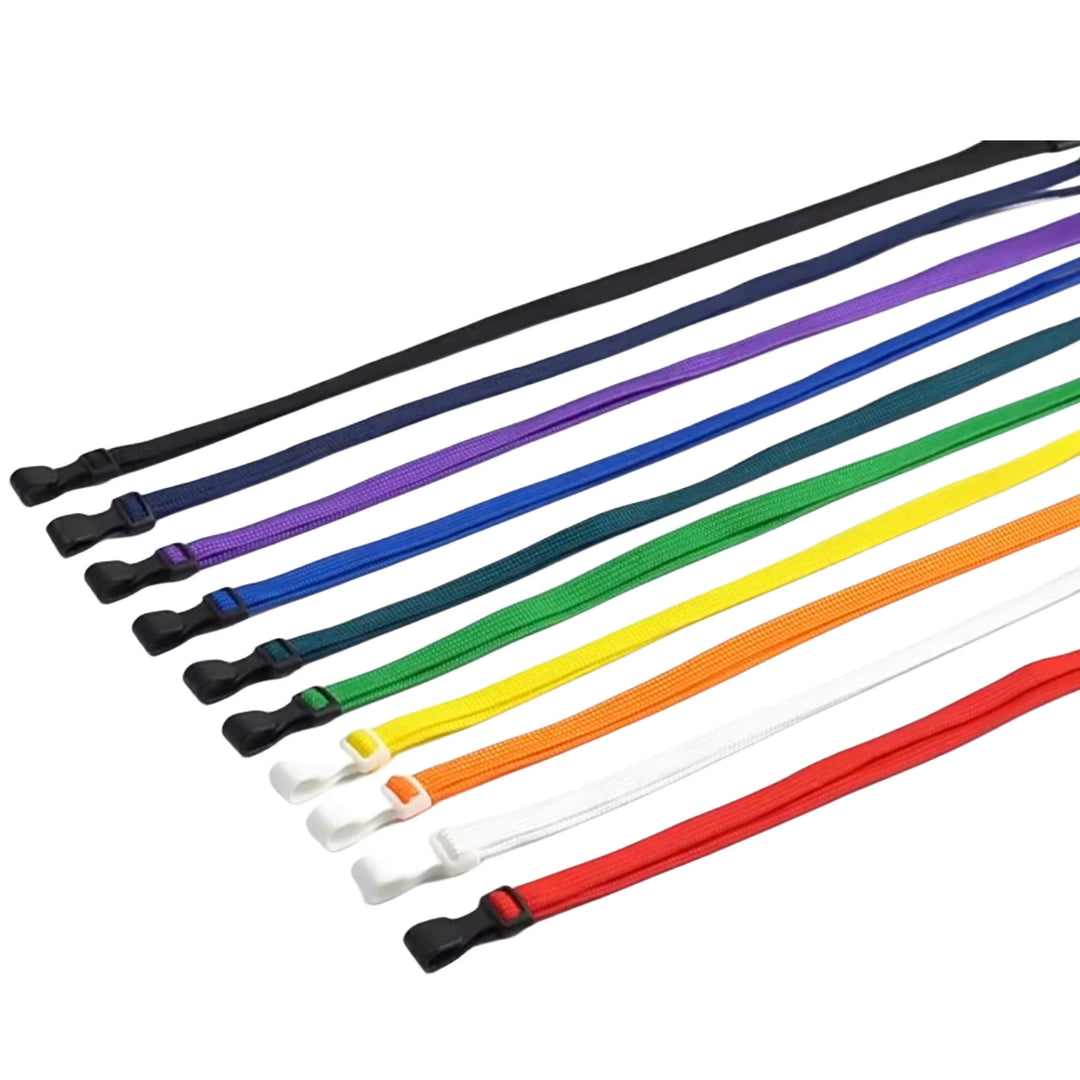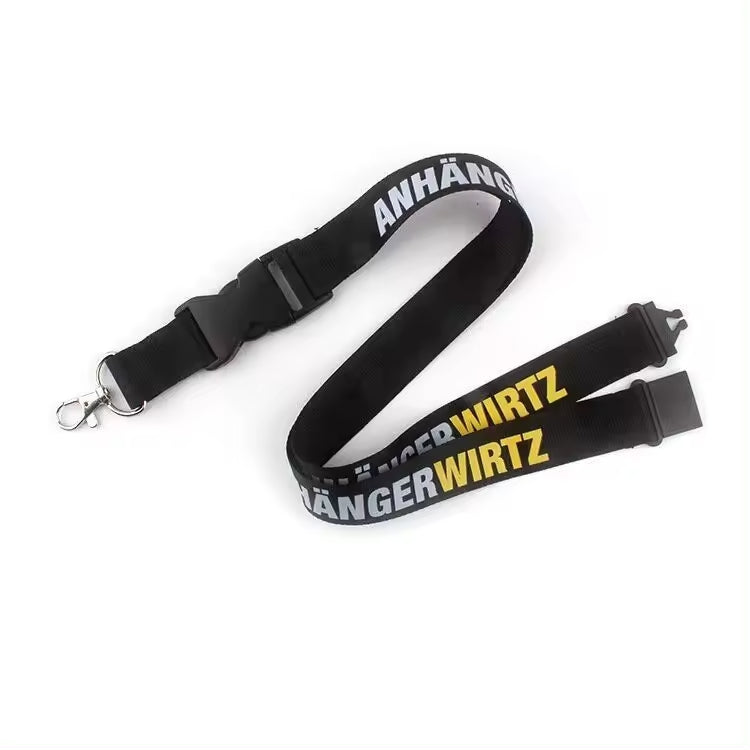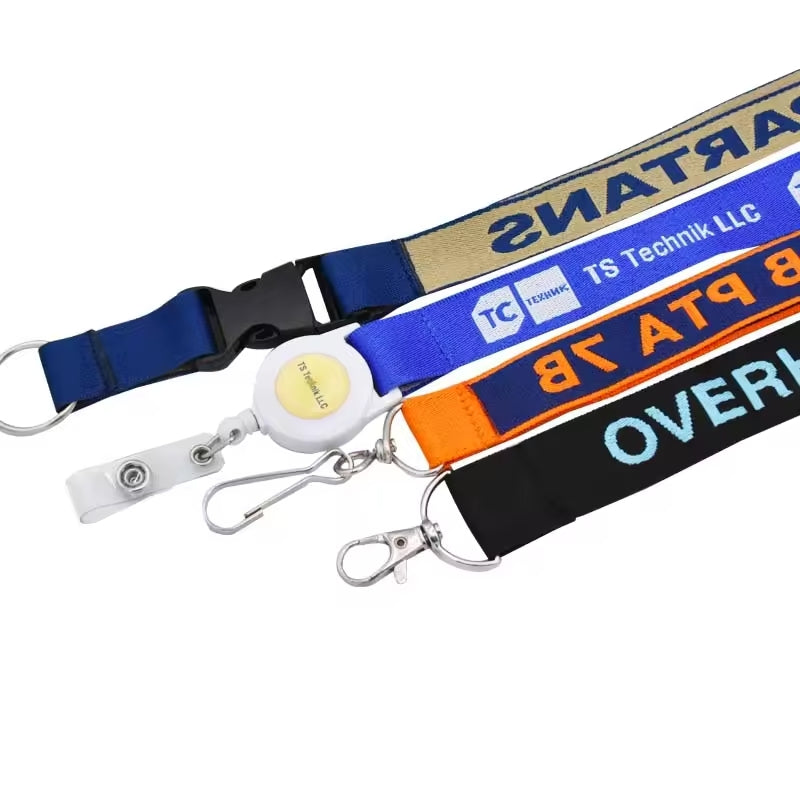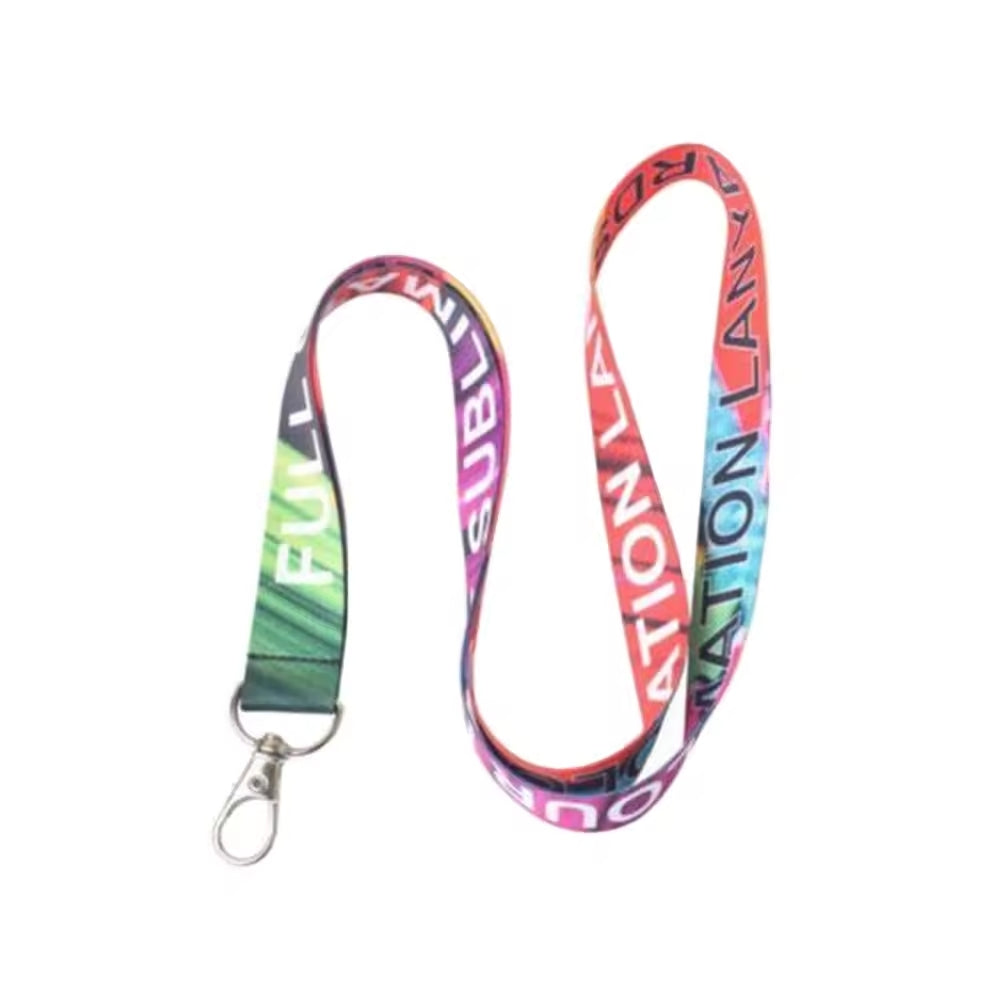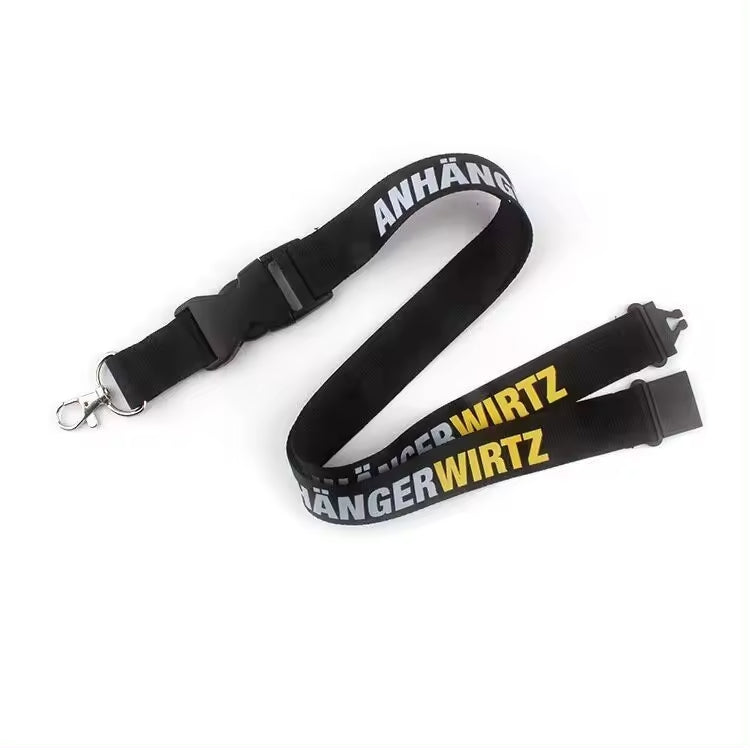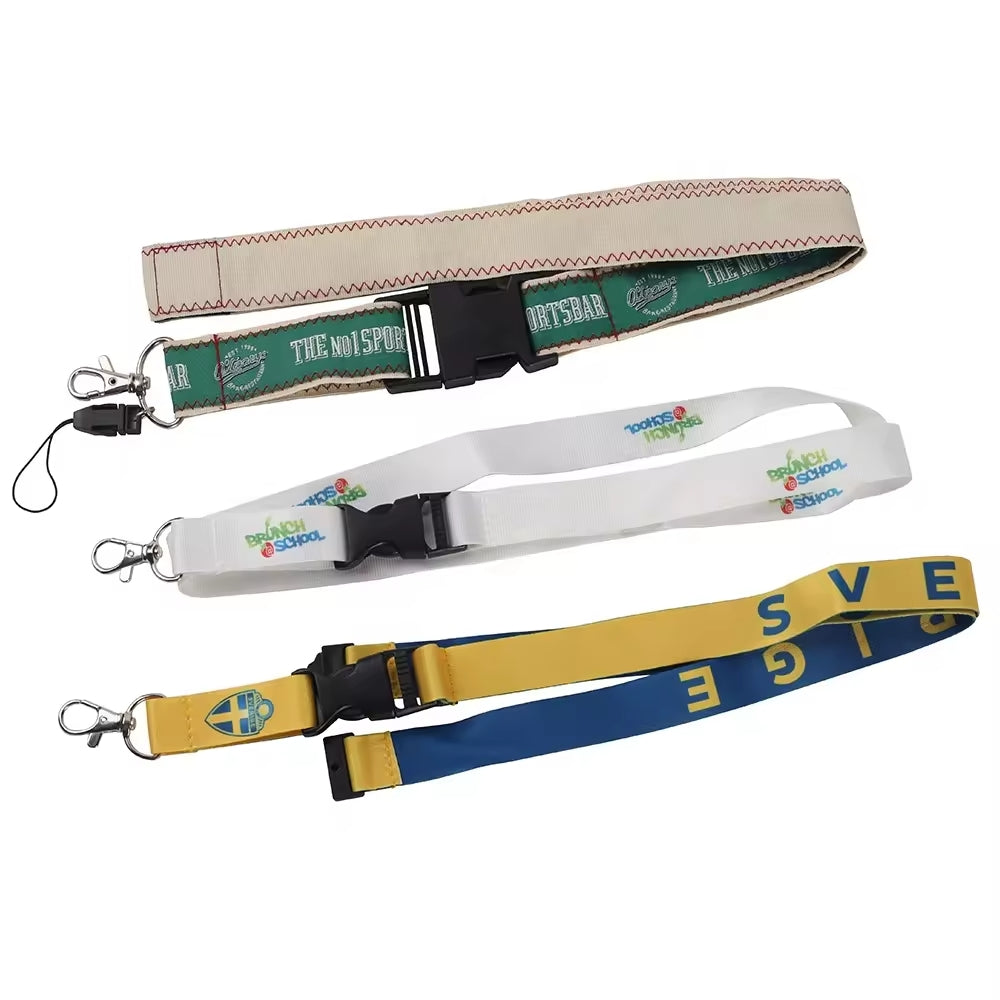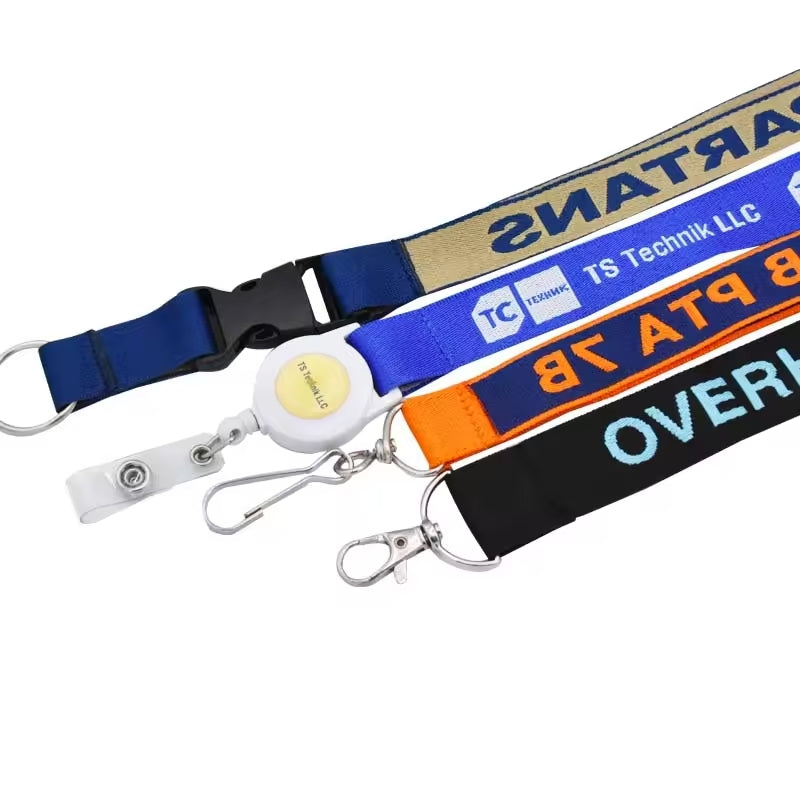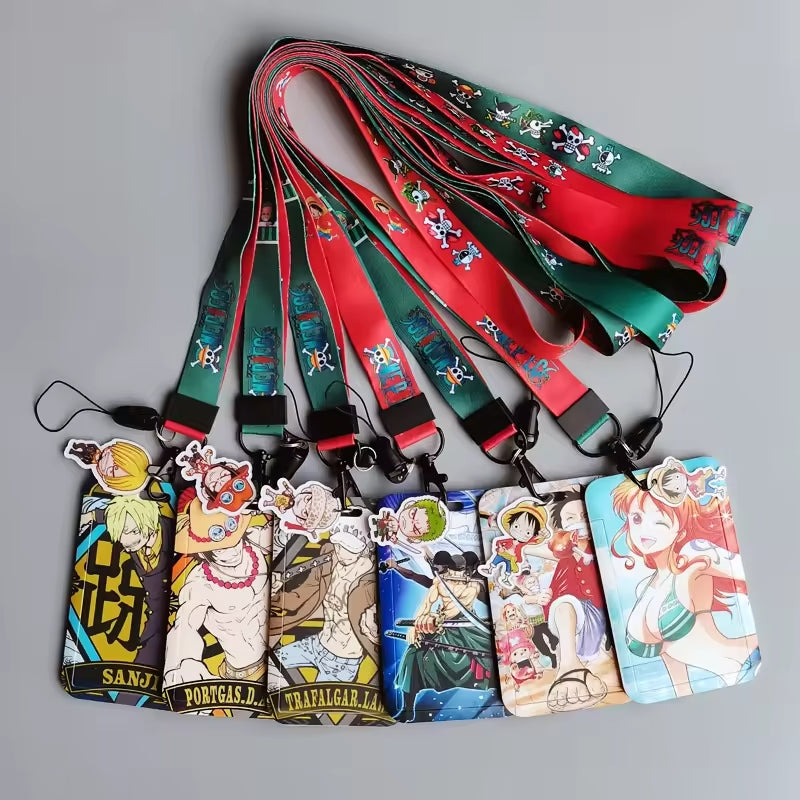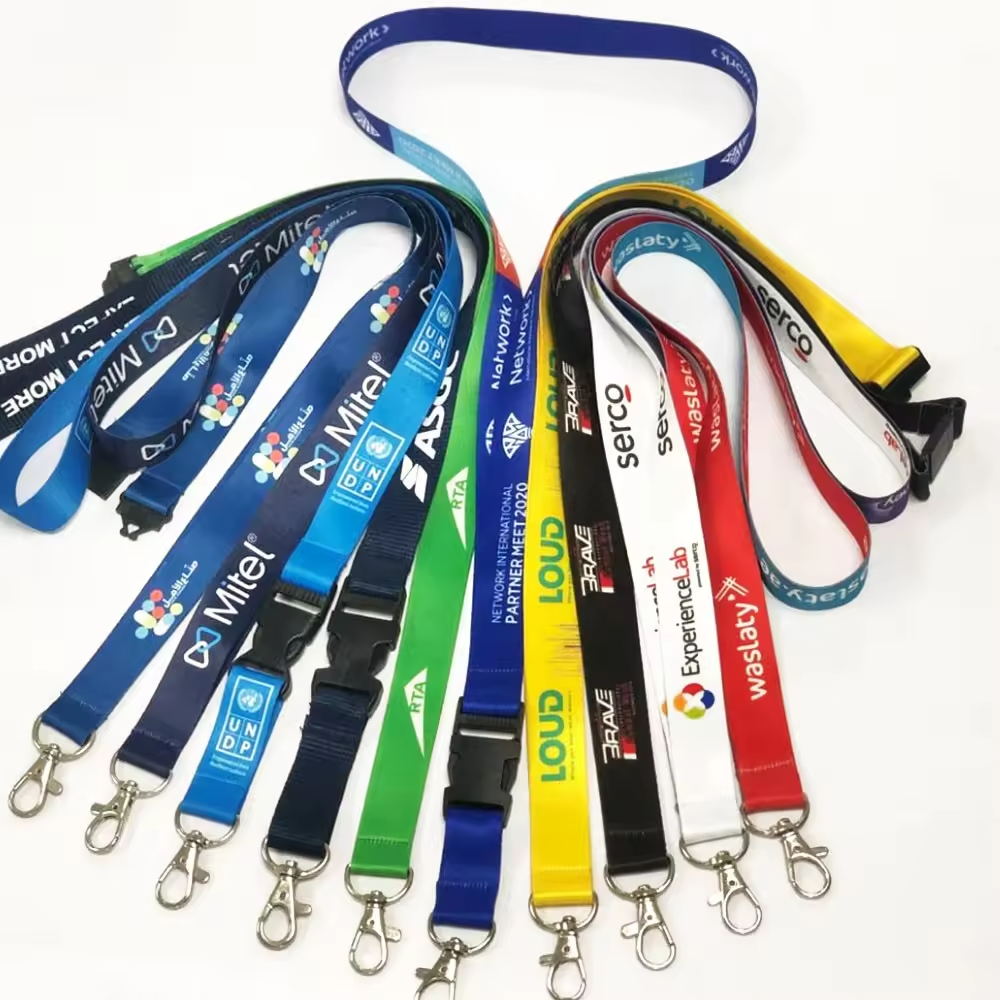
Custom Lanyards
Customize Your Perfect Lanyards
Limitless customization options for a patch that’s as unique and imaginative as your brand.
Customizable Lanyards
Create custom lanyards as an affordable, highly customizable product to get your name out there – whether for schools, universities, sports teams, bands, or even corporate promotional giveaways.
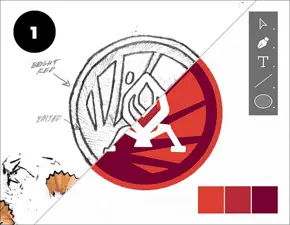
Use your imagination
Start with the basics: what type of patch you’re looking for and how many you’ll need. Customize every last millimeter of your patch, from the backing to the shape to the materials used.
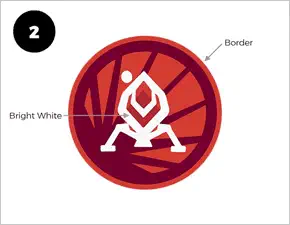
Give Us the OK
Your patch = your canvas. Upload your own pretty artwork if you have it, or work with one of our pro in-house designers free of charge.We’ll send over a mockup or physical sample of your patch for your approval, then make as many weaks as it takes until you’re 100% satisfied.
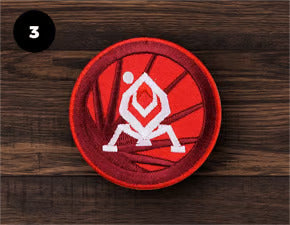
Shipping and Receive Your Patches
Mail time! We’ll send your gorgeous patches to your doorstep, with free tracked shipping.
Custom Lanyard for Every Industry
Work with the largest custom lanyard manufacturer in the world for unlimited customization possibilities. Together, we’ll make each and every one of your lanyards from scratch, allowing you to choose the color, length, attachment type, and more.
A wide variety of safety lanyards available
Restraint Lanyard
Restraint lanyards, also known as fall restraint lanyards, are used to prevent an accident before it occurs. Fixed between a harnessed worker and an anchor point, restraint lanyards are a certain length, limiting the range of movement of the wearer and preventing them from moving into areas where there is a risk of falling. They’re super effective at preventing injury as they make it impossible for a fall to occur, but they do limit the range of motion of the wearer, which means they’re not suitable for every environment.
Work Positioning Lanyard
Work positioning lanyards are designed to be used in conjunction with a work positioning system, they allow an employee to work supported against a vertical or inclined surface. The work positioning lanyard allows the wearer to lean back away from the vertical or inclined surface safely, and have both hands available to work. Working on a vertical surface can be pretty challenging, and in some ways limiting, so it’s important to have the right gear for the job. In this instance, the right gear for this job is a work positioning lanyard.
Fall Arrest Lanyard
Fall arrest lanyards work by dissipating the energy generated should the worker fall. Unlike fall restraint lanyards, they don’t prevent the wearer from moving into areas where there is a danger of falling. While fall restraint lanyard keeps workers out of danger's reach, for some situations fall arrest lanyards are the more suitable option as they don’t restrict the movement of the wearer. Fall arrest lanyards allow for a much larger range of movement and freedom when working; depending on the nature of your work environment, this may be a more suitable option than a fall restraint, which is somewhat limiting.
Twin Tail Fall Arrest Lanyard
The twin tail fall arrest lanyard works as a part of a fall arrest system. As detailed above, fall arrest lanyards don’t stop you from moving into dangerous areas, but catch you if you fall. Twin tail lanyards are identifiable by their “y” shaped arms (the clue is in the name!). Their distinctive shape makes them a great option if your work environment requires you to move from anchor point to anchor point. Having two fixing points allows you to have a 100% tie off at all times.
Elasticated Lanyard
As you might have guessed from their name, elasticated lanyards are springy and elasticated. The purpose of a lanyard being elasticated is to remove the slack that could cause a trip hazard. Fall arrest lanyards can reduce injury when a worker falls by arresting the momentum of their fall, stopping them from impacting on a lower level, and absorbing the energy generated.
Tool Lanyard
When working at ground level, a simple slip of the hand and dropping a tool isn’t a big deal. But when you’re working at height, dropping a tool could result in a potentially fatal accident.Dropped objects cause hundreds of fatalities every year, and thousands of injuries.If you work at height and often work with tools, a tool lanyard could a great option for you.
Tool lanyards secure your tools to your person or to suitable anchorage points, so in the event that your hand slips and you release the tool, it will not drop. Similar to what a fall arrest is to a worker, a tool lanyard is for your tools!
These are just a few of the many lanyard options available. If you’re unsure about which of our many lanyards is right for you, contact our team and we’ll do everything we can to help you find the perfect lanyard solution.
If you’re interested in shopping for safety lanyards, check out the wide range of lanyards available here!
Lanyards We Have Created For Customers Like You
We’ve helped hundreds of thousands of brands create custom products like lanyards for their businesses… and you’re next! Take a look at a few of our favorite past projects.
Frequently asked questions
Most frequent questions and answers
You have the choice of a variety of attachments to go with your custom lanyard. You can choose from the following:
- Lobster Claw
- Swivel J-Hook
- Bulldog Clip
- Split Key Ring
- Double-Ended with Bulldog Clips
- Bottle Opener Hook
- Double-Ended with Lobster Claws
- Double-Ended with Thumb Hooks
- Double-Ended with Swivel-J hooks
The longest length for custom lanyards is 30”.
The shortest length available for custom lanyards is 12”.
When it comes to lanyard types, it usually refers to different types of cords or straps used to carry keys, identification cards, or other items. Some common types of lanyards include:
- Phone lanyard: used to hang a phone around the neck or wrist for easy carrying and use.
- Keychain lanyard: used to carry keys, typically with a hook or ring clasp.
- ID badge lanyard: used to carry work identification cards, usually with a badge clip or holder.
- Photographer's lanyard: used to carry a camera or lens, typically with a quick-release buckle. If you want to learn more about lanyard types, you can search for related product pages on the internet or shopping websites, such as Amazon or eBay. You can also find various types of lanyards on handicraft websites or custom merchandise websites.
Lanyards can be classified based on the materials they are made of. Common materials used for lanyards include:
- Nylon: known for its durability and strength, nylon lanyards are popular for everyday use.
- Polyester: offers a smooth texture and vibrant color options, making polyester lanyards a stylish choice.
- Cotton: provides a soft and comfortable feel, cotton lanyards are often chosen for their natural look.
- Silicone: flexible and waterproof, silicone lanyards are ideal for outdoor activities or sports events.
- Leather: offers a classy and sophisticated appearance, leather lanyards are often used for professional settings. By categorizing lanyards based on materials, users can choose a lanyard that best suits their needs and preferences.
Lanyards can also be classified based on their shapes. Some common shapes of lanyards include:
- Flat lanyards: These lanyards have a flat surface and are typically made of nylon or polyester. They are comfortable to wear and can be customized with logos or text.
- Round lanyards: Round lanyards have a cylindrical shape and are often made of braided material like nylon or cotton. They are durable and have a classic look.
- Tubular lanyards: Tubular lanyards have a hollow cylindrical shape, providing a soft and lightweight option for carrying keys or badges. They are commonly made of polyester or nylon.
- Woven lanyards: These lanyards are made by weaving threads together to create a pattern or design. Woven lanyards are durable and can be customized with intricate designs.
By categorizing lanyards based on their shapes, users can choose a lanyard style that best fits their preferences and needs.
Lanyards can also be classified based on their sizes and lengths. Here are some common types of lanyards categorized by size and length:
- Standard lanyards: These are typically around 36 inches (91 cm) in length and are designed to be worn around the neck for everyday use. They are versatile and suitable for carrying keys, ID badges, or small items.
- Short lanyards: Short lanyards are around 18 inches (46 cm) or less in length and are often used for attaching to items like flash drives, pens, or small tools. They offer convenience and easy access to frequently used items.
- Long lanyards: Long lanyards are typically longer than standard lanyards, measuring around 40 inches (102 cm) or more. They are suitable for situations where items need to be carried at a greater distance from the body, such as outdoor activities or events.
- Adjustable lanyards: These lanyards come with adjustable lengths, allowing users to customize the fit according to their preference. They offer flexibility and versatility for different carrying needs.
By categorizing lanyards based on their sizes and lengths, users can choose a lanyard that best fits their specific requirements and comfort preferences.
We can produce all kinds of lanyards you can imagined or you can find in the market.
When it comes to customizing a lanyard, there are several key pieces of information that are required in order to create a personalized and effective product. From design elements to material choices, each detail plays a crucial role in the overall look and functionality of the lanyard. In this article, we will explore the essential information needed for customizing a lanyard, as well as important considerations to keep in mind throughout the process.
First and foremost, one of the most important pieces of information required for customizing a lanyard is the design concept. This includes the overall look and feel of the lanyard, such as color schemes, logos, text, and any other visual elements that need to be incorporated. Providing a clear and detailed design concept is essential for the customization process, as it serves as the foundation for creating a lanyard that accurately reflects the desired aesthetic.
In addition to the design concept, it is also important to specify the material preferences for the lanyard. Lanyards can be made from a variety of materials, including nylon, polyester, and eco-friendly options such as bamboo or recycled PET. Each material has its own unique characteristics in terms of durability, texture, and sustainability, so it is crucial to choose the most suitable material based on the intended use of the lanyard.
Furthermore, the length and width of the lanyard are key factors that need to be considered during customization. The length of the lanyard will determine how it hangs around the neck or wrist, while the width will affect the visibility of any printed logos or text. Providing specific measurements for the length and width of the lanyard ensures that the final product meets the desired specifications and is comfortable to wear.
Another important aspect to consider when customizing a lanyard is the attachment options. Lanyards typically come with a variety of attachment choices, such as swivel hooks, bulldog clips, or breakaway safety features. The type of attachment selected will depend on the intended use of the lanyard and the preferences of the wearer. It is important to choose a secure and functional attachment option that meets the needs of the end user.
When customizing a lanyard, it is also crucial to consider the printing method for any logos, text, or graphics that will be included on the lanyard. Common printing methods for lanyards include screen printing, dye sublimation, and heat transfer. Each printing method has its own advantages in terms of color vibrancy, durability, and cost-effectiveness, so it is important to choose the most appropriate method based on the design requirements and budget constraints.
Moreover, the quantity and timeline for the custom lanyard order are important details that need to be communicated upfront. Whether ordering a small batch of lanyards for a specific event or a larger quantity for ongoing use, providing the exact quantity needed will ensure that the manufacturing process runs smoothly and efficiently. Additionally, specifying the timeline for production and delivery is essential for meeting any deadlines or event dates.
In terms of branding and customization, it is important to ensure that the lanyard design aligns with the overall branding strategy of the organization or event. This includes using consistent colors, fonts, and logos that are in line with the brand identity. By maintaining a cohesive and recognizable design across all branded materials, the lanyard becomes a powerful tool for promoting brand awareness and visibility.
Throughout the customization process, it is crucial to work closely with the lanyard supplier or manufacturer to address any questions or concerns that may arise. Clear and open communication is key to ensuring that the final product meets the expectations and requirements of the customer. By providing detailed information and feedback throughout the customization process, it is possible to create a customized lanyard that is both visually appealing and functional.
In conclusion, customizing a lanyard requires a thorough understanding of the design concept, material choices, attachment options, printing methods, quantity, timeline, branding strategy, and effective communication with the supplier. By providing detailed information and paying attention to these key factors, it is possible to create a customized lanyard that meets the specific needs and preferences of the customer.
At topone, you can just send us your artwork or logos even just your thoughts, we will finish everything later.
Generally speaking, for sampling, we only need 3-5 days. However, if we need to make mockups and submit them for your approval, the sample time will be 3-5 days after you approve the mockups. The production time for bulk orders is usually within a week after payment, unless the quantity is particularly large, such as 1,000,000 units, which may take two weeks.





